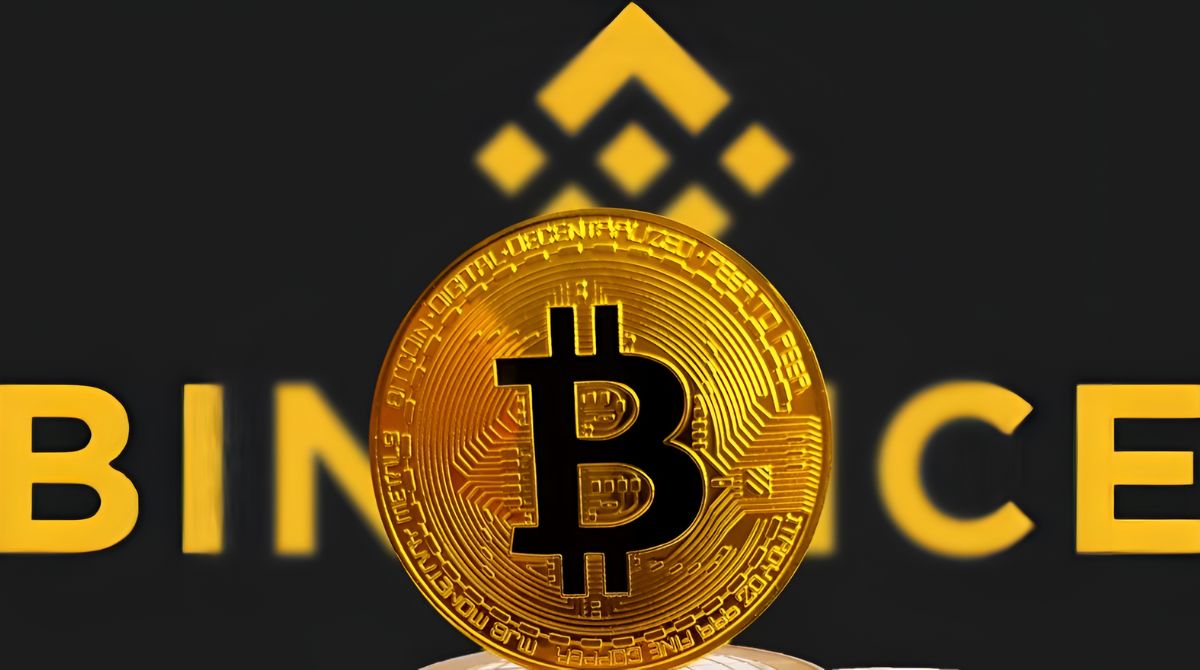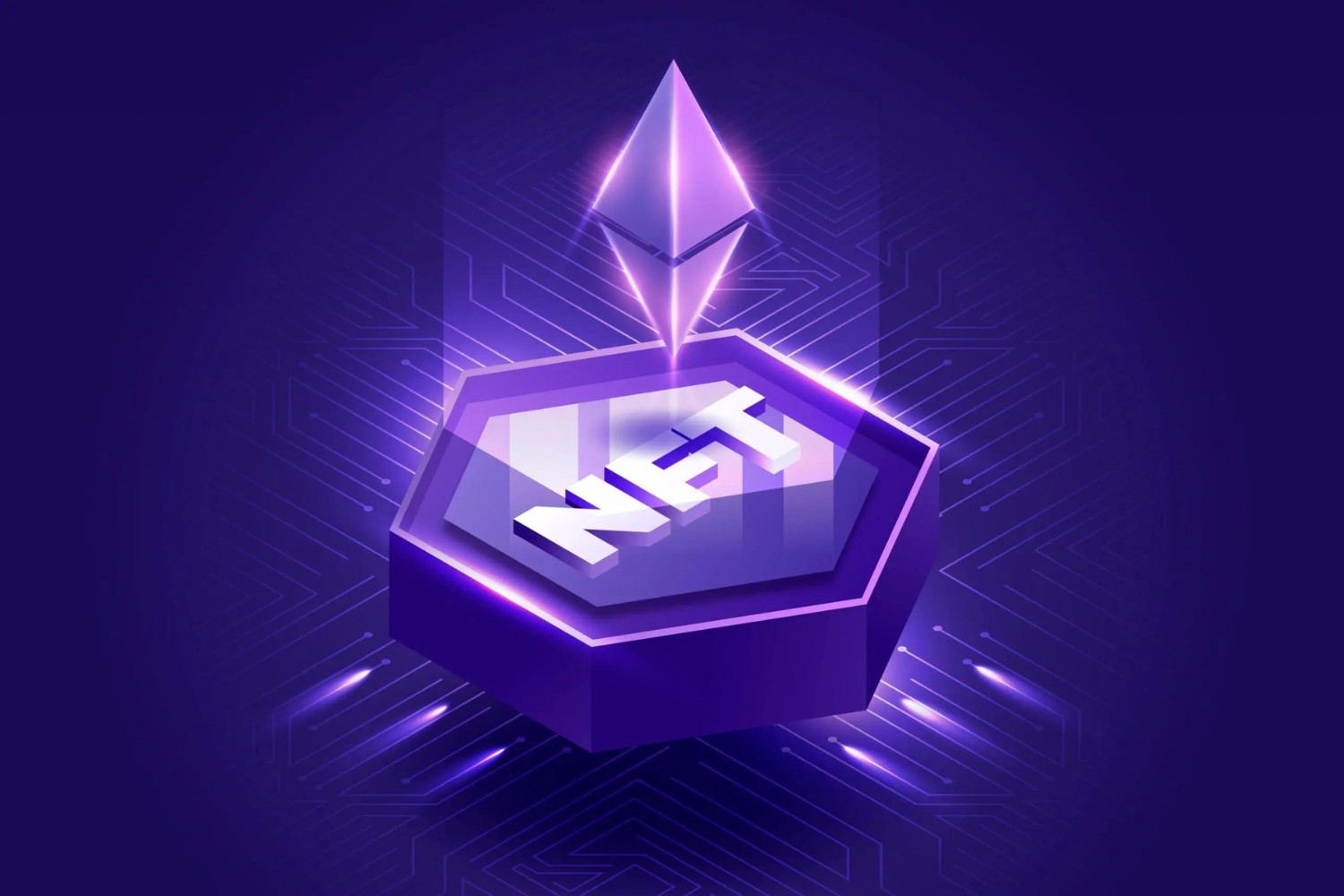Introduction
Ethereum, the second-largest cryptocurrency by market capitalization, has been experiencing a downturn in recent times. This unexpected decline has left many investors and enthusiasts puzzled, questioning the reasons behind Ethereum’s downward trajectory. In this article, we will delve into several factors that may be contributing to this significant shift in Ethereum’s market performance.
It is important to note that cryptocurrency markets are highly volatile, and price fluctuations are not uncommon. However, the recent downward trend of Ethereum seems to be driven by a combination of both external and internal factors that warrant closer examination.
Ethereum, known for its smart contract capabilities and decentralized applications, has been hailed as a groundbreaking platform set to revolutionize various industries. However, despite its promise, Ethereum is facing several challenges that have contributed to its current decline.
In this article, we will explore key factors including the lack of scalability, high gas fees, competition from other platforms, investor skepticism, regulatory concerns, market volatility, and technical challenges.
Lack of Scalability
One of the major hurdles Ethereum has been grappling with is the lack of scalability. As more users and decentralized applications (DApps) join the Ethereum network, the strain on its infrastructure becomes increasingly evident. The current design of Ethereum’s blockchain limits its transaction capacity, resulting in slower transaction times and higher fees.
Ethereum’s scalability issue stems from its consensus algorithm, known as Proof of Work (PoW). Under this system, miners compete to solve complex mathematical puzzles to validate transactions and add them to the blockchain. While PoW ensures network security, it also demands significant computational power and time, which in turn slows down the network.
To address this challenge, Ethereum has been working on transitioning to a new consensus mechanism called Proof of Stake (PoS) through the Ethereum 2.0 upgrade. PoS aims to improve scalability by replacing miners with validators who are chosen based on the number of tokens they hold. This transition is expected to increase the network’s transaction throughput and significantly reduce energy consumption.
However, the full implementation of Ethereum 2.0 is a complex and time-consuming process. Currently, Ethereum operates on PoS alongside PoW, but the complete shift to PoS is still in progress. As a result, the scalability problem persists, hindering Ethereum’s ability to handle a higher volume of transactions efficiently.
While the Ethereum community eagerly awaits the full implementation of Ethereum 2.0, several layer-2 scaling solutions have emerged to alleviate scalability issues in the interim. These solutions, such as Optimistic Rollups and Plasma, help reduce the burden on the main Ethereum blockchain by aggregating multiple transactions into a single batch. By offloading some computation and storage demands to these layer-2 solutions, Ethereum can achieve faster and more cost-effective transactions.
Nevertheless, the lack of immediate scalability solutions puts Ethereum at a disadvantage compared to other platforms that have already implemented or designed their blockchains to handle higher transaction volumes. As users and developers seek platforms with faster transaction times and lower fees, Ethereum faces the risk of losing market share to its more scalable competitors.
High Gas Fees
Another significant factor contributing to Ethereum’s recent downturn is the issue of high gas fees. Gas fees, denominated in Ether, are the charges users pay to execute transactions or interact with smart contracts on the Ethereum network. These fees are essential for incentivizing miners and ensuring the security of the network.
However, the surge in Ethereum’s popularity, coupled with the increasing number of transactions and decentralized applications, has caused gas fees to skyrocket. This has presented a considerable obstacle for users, particularly those engaged in smaller transactions or utilizing less capital-intensive DApps.
The high gas fees on the Ethereum network can be attributed to the congestion and limited capacity of the blockchain. When the demand for transactions exceeds the network’s capacity, users engage in bidding wars, competing to have their transactions included in the next block. This bidding process drives up the gas fees, making transactions more expensive for users.
The impact of high gas fees is particularly felt by decentralized finance (DeFi) users. DeFi platforms, built on the Ethereum network, allow users to engage in activities such as lending, borrowing, and trading without relying on intermediaries. Unfortunately, the exorbitant gas fees have made these interactions prohibitively expensive for many individuals, pushing them towards alternative DeFi platforms operating on more affordable networks.
The Ethereum community recognizes the urgent need to address the issue of high gas fees. Several proposals and initiatives have been put forth to mitigate the impact, including the implementation of Ethereum Improvement Proposals (EIPs) to optimize gas usage and reduce fees. Additionally, layer-2 scaling solutions, such as rollups and sidechains, aim to alleviate the burden on the main Ethereum network by enabling faster and cheaper transactions.
Nonetheless, while these solutions offer potential relief, their widespread adoption and integration into the Ethereum ecosystem require time and coordination. In the meantime, the persistently high gas fees pose a barrier to entry for new users and hinder the growth and usability of Ethereum-based applications.
The issue of high gas fees not only drives away users but also discourages developers from building on the Ethereum platform. As alternative blockchain networks arise, offering lower fees and faster transactions, developers may opt to migrate their projects, diverting innovation and investment away from Ethereum.
Competition from Other Platforms
Ethereum’s dominance in the blockchain industry has faced increasing competition from other platforms vying for market share. While Ethereum enjoyed the first-mover advantage and established itself as the go-to platform for decentralized applications (DApps) and smart contracts, newer and more scalable platforms have emerged, challenging Ethereum’s position.
Platforms such as Binance Smart Chain (BSC), Solana, and Polkadot offer faster transaction speeds, lower fees, and improved scalability compared to Ethereum. BSC, for instance, has gained significant traction due to its compatibility with the Ethereum Virtual Machine (EVM), allowing developers to easily port their Ethereum-based DApps to BSC.
One of the key reasons behind the rise of these competing platforms lies in their ability to overcome Ethereum’s scalability limitations. By implementing different consensus mechanisms or layer-1 solutions designed for high throughput, these platforms can accommodate a larger number of transactions at a fraction of the cost, attracting users and developers seeking more efficient alternatives.
Moreover, the competition extends beyond scalability. Each platform has its own unique features and focus areas, catering to specific use cases and niche markets. For example, Solana is positioned as a high-performance blockchain emphasizing speed and scalability for decentralized applications, while Polkadot aims to provide interoperability between different blockchains.
As developers and users migrate towards these alternative platforms, Ethereum could face a reduction in network activity and a decline in its market share. Additionally, the emergence of robust ecosystems on these competing platforms, complete with decentralized exchanges, lending protocols, and other DeFi applications, presents a viable alternative to Ethereum’s DeFi dominance.
To address these concerns, Ethereum has been actively working on solutions to maintain its competitive edge. The Ethereum 2.0 upgrade, as mentioned earlier, aims to improve scalability and alleviate congestion. Additionally, the Ethereum community is exploring layer-2 solutions, including rollups and sidechains, to enhance transaction throughput and reduce fees.
While Ethereum’s roadmap indicates its commitment to addressing the challenges posed by competing platforms, the speed of development and adoption remains crucial. As other platforms gain popularity and establish their ecosystems, Ethereum must quickly implement its planned improvements to remain a key player in the decentralized finance and smart contracts space.
Investor Skepticism
Another factor contributing to Ethereum’s recent downturn is the rising skepticism among investors. While Ethereum has been a promising platform with significant potential, the volatility and speculative nature of the cryptocurrency market have led some investors to question its long-term value and stability.
One of the primary concerns among skeptics is the lack of regulatory clarity surrounding cryptocurrencies, including Ethereum. The regulatory landscape for cryptocurrencies is still evolving, with governments and regulatory bodies grappling to establish guidelines and frameworks to govern their use. This uncertainty creates a sense of risk and unease among traditional investors, as they are cautious about investing in assets that may face regulatory scrutiny or restrictions in the future.
The high-profile nature of certain cryptocurrency scams and fraudulent projects has also contributed to investor skepticism. While Ethereum itself is not at fault, these incidents tarnish the overall reputation of the industry and raise doubts about the legitimacy and credibility of cryptocurrencies as a whole.
Furthermore, the volatile nature of cryptocurrency prices, including Ethereum, has made some investors wary. The rapid price fluctuations, influenced by factors such as market sentiment, global events, and speculation, can lead to significant gains but also substantial losses. This unpredictability can deter risk-averse investors who prefer more stable investment options.
It is worth noting that Ethereum’s price volatility is not unique to the cryptocurrency market. Traditional financial markets also experience fluctuations; however, the inherent nature of cryptocurrencies amplifies these movements, potentially intensifying investor concerns.
Moreover, Ethereum faces competition not only from other platforms, as discussed earlier, but also from alternative investment vehicles. The emergence of non-fungible tokens (NFTs), for instance, has attracted attention and investment from both crypto enthusiasts and traditional investors. These digital assets, often built on top of blockchain platforms like Ethereum, offer unique ownership and value propositions, diverting attention and capital away from traditional cryptocurrencies.
Despite these concerns, Ethereum remains a significant player in the blockchain industry and continues to garner support from a vibrant community of developers, users, and investors. As the ecosystem matures and regulatory frameworks become clearer, it is possible that investor skepticism may ease, and Ethereum’s value proposition could regain the confidence of both traditional and crypto-native investors.
Regulatory Concerns
Regulatory concerns pose another significant challenge for Ethereum and the broader cryptocurrency industry. As cryptocurrencies gain mainstream attention and adoption, governments and regulatory bodies worldwide are grappling with how to effectively regulate and oversee these digital assets.
The decentralized and borderless nature of cryptocurrencies, including Ethereum, makes it challenging for regulators to establish clear guidelines and frameworks. Different jurisdictions have taken varying approaches, with some embracing cryptocurrencies and blockchain technology while others have been more cautious or even hostile towards them.
These regulatory uncertainties can create a sense of risk and hinder broader adoption of cryptocurrencies, including Ethereum. Investors, particularly institutional and traditional investors, often seek clarity and regulatory compliance to feel confident in allocating their funds to an asset class.
One concern surrounding regulation is the potential for stricter Know Your Customer (KYC) and Anti-Money Laundering (AML) requirements. Governments may impose more stringent regulations to prevent illicit activities, money laundering, and terrorist financing facilitated through cryptocurrencies. While these measures aim to enhance the overall security and integrity of the financial system, they may present challenges for privacy-conscious users and decentralized applications built on the Ethereum network.
Additionally, the classification of cryptocurrencies as securities or commodities remains a topic of debate in various jurisdictions. If Ethereum were to be classified as a security, it could potentially face more stringent regulations, including registration requirements and restrictions on its sale and trading. This uncertainty around the regulatory classification of cryptocurrencies adds to investor skepticism and may hinder the growth and development of the Ethereum ecosystem.
However, it’s important to note that regulatory concerns are not solely negative for Ethereum. Clear and well-defined regulations can bring stability and legitimacy to the industry, attracting institutional investors and fostering wider adoption. Regulatory frameworks can also promote consumer protection, reduce fraud, and pave the way for blockchain technology’s integration into existing financial systems.
The Ethereum community is actively engaging with regulators to better understand and address their concerns. Dialogue between developers, policymakers, and regulators is vital in establishing a regulatory environment that fosters innovation while ensuring the protection of market participants and the overall stability of the financial ecosystem.
As regulatory frameworks evolve and become more established, the increased clarity and certainty surrounding Ethereum’s regulatory status may alleviate concerns and provide a foundation for further growth and adoption of the platform.
Market Volatility
Market volatility is a prominent characteristic of the cryptocurrency industry, and Ethereum is no exception. The price of Ethereum, like other cryptocurrencies, can experience substantial and rapid fluctuations, driven by a myriad of factors, including market sentiment, global events, technological developments, and regulatory announcements.
This volatility can be attributed to the relatively nascent and speculative nature of the cryptocurrency market. The absence of a centralized authority, coupled with the limited liquidity compared to traditional financial markets, can amplify price movements. As a result, Ethereum’s value can soar to new heights in bull markets, only to experience sharp corrections and declines during bear markets.
Additionally, the interconnectedness of the cryptocurrency market also contributes to Ethereum’s volatility. As one of the leading cryptocurrencies, Ethereum often mirrors the overall sentiment of the market. Significant price movements in Bitcoin, for example, often have a cascading effect on other cryptocurrencies, including Ethereum. This correlation can lead to heightened volatility and increased fluctuations in Ethereum’s price.
The presence of speculative trading practices, such as margin trading and short selling, further intensifies volatility in the cryptocurrency market. Leveraged positions can amplify both gains and losses, making the market susceptible to rapid price swings as traders react to market conditions and sentiment.
Market volatility poses challenges and risks for investors and traders. While substantial price increases offer potential opportunities for significant gains, they also carry the risk of severe reversals and losses. This volatility may deter risk-averse investors or those seeking more stable investment options.
However, it’s important to note that market volatility is not necessarily indicative of Ethereum’s underlying value or technology. Ethereum’s market performance is influenced by various external factors, and short-term price fluctuations may not reflect its long-term potential or adoption rate.
Ethereum’s technological advancements and growing adoption in various industries, such as decentralized finance (DeFi) and non-fungible tokens (NFTs), contribute to its fundamental value. As more applications and use cases are developed on the Ethereum network, it strengthens the platform’s ecosystem, potentially leading to long-term growth and stability.
Moreover, market volatility is not exclusive to cryptocurrencies. Traditional financial markets also experience fluctuations, albeit in different magnitudes and with varying underlying reasons. Understanding and managing the risks associated with market volatility is an essential aspect of participating in any financial market, including cryptocurrencies.
As the cryptocurrency market continues to mature, regulatory clarity increases, and wider adoption occurs, market volatility may gradually decrease. This maturation process could lead to the stabilization of Ethereum’s price and a more balanced market where long-term value and innovation drive its growth.
Technical Challenges
While Ethereum has made significant strides in the blockchain space, it is not exempt from technical challenges that pose hurdles to its growth and adoption. These challenges range from scalability limitations to network security concerns, creating an intricate web of technical hurdles for the Ethereum ecosystem.
One of the primary technical challenges faced by Ethereum is the issue of scalability. As mentioned earlier, Ethereum’s current consensus algorithm, Proof of Work (PoW), demands significant computational power and slows down transaction processing. This scalability bottleneck limits Ethereum’s ability to handle a larger volume of transactions and hampers its potential for broader adoption.
However, Ethereum is actively working on a solution to this challenge through the Ethereum 2.0 upgrade, which aims to transition from PoW to Proof of Stake (PoS). PoS introduces staking as a more energy-efficient method of validating transactions, greatly enhancing scalability. As Ethereum 2.0 rolls out, the network is expected to handle a significantly higher transaction throughput, enabling a more seamless user experience.
In addition to scalability, Ethereum faces security challenges. Smart contracts, a key feature of the platform, are susceptible to vulnerabilities and bugs that can be exploited by malicious actors. Notable incidents, such as the infamous DAO hack in 2016, showcased the potential risks associated with smart contracts. While Ethereum has implemented various security measures, audits, and best practices to mitigate these risks, ongoing vigilance and continuous improvement are necessary to ensure the security of the platform.
Ethereum also encounters technical challenges related to network congestion and high gas fees, a point discussed earlier. The limited capacity of the Ethereum blockchain can result in slower transaction times, increased waiting periods, and higher fees. While layer-2 scaling solutions, such as rollups and sidechains, have emerged to mitigate these challenges, their widespread adoption requires effort and coordination from the Ethereum community.
Interoperability is another technical challenge that Ethereum faces. As blockchain technology evolves, the ability for different blockchains to communicate and interact seamlessly becomes crucial. Ethereum, being one of the leading platforms in the industry, needs to interoperate with other blockchains to foster a more connected and interoperable ecosystem. Efforts such as the Ethereum Virtual Machine (EVM) compatibility on other platforms and projects like Polkadot and Cosmos aim to tackle this challenge by providing interoperability protocols.
Technical challenges demand ongoing research, development, and collaboration within the Ethereum community. As developers work to address scalability, security, congestion, and interoperability, Ethereum aims to strengthen its infrastructure and offer a more robust and technologically advanced platform for decentralized applications and smart contracts.
Conclusion
Despite its recent downturn, Ethereum remains one of the most influential and widely-used blockchain platforms in the world. The challenges it faces, including scalability limitations, high gas fees, competition from other platforms, investor skepticism, regulatory concerns, market volatility, and technical hurdles, are not insurmountable.
Ethereum’s development team, community, and ecosystem are actively working to address these challenges and drive the platform forward. Upgrades such as Ethereum 2.0 are poised to significantly enhance scalability and reduce transaction fees, making Ethereum more efficient and user-friendly.
Furthermore, ongoing efforts to foster regulatory clarity, promote interoperability, and improve network security are essential for Ethereum’s long-term growth and adoption. The collaboration between developers, policymakers, and regulators will shape the regulatory landscape and provide a foundation of trust and legitimacy for Ethereum and the broader cryptocurrency industry.
While competition from other platforms is increasing, Ethereum’s established network effects, vibrant developer community, and extensive ecosystem give it a competitive edge. The platform’s track record of innovation, coupled with its ability to attract DApps, users, and investors, positions Ethereum well for future growth and industry leadership.
Market volatility, though a characteristic of the cryptocurrency industry, does not diminish Ethereum’s fundamental value and potential. As the ecosystem matures and broader adoption takes hold, volatility may decrease, and long-term value propositions such as DeFi, NFTs, and decentralized applications can drive Ethereum’s growth and utility.
Ultimately, the challenges Ethereum faces are not uncommon for a technological innovation of its scale and ambition. By addressing scalability, reducing fees, fostering regulatory cooperation, promoting security, and maintaining technical excellence, Ethereum can solidify its position as a pillar of the blockchain industry.
While there are no guarantees in the ever-evolving cryptocurrency landscape, Ethereum’s resilience, adaptability, and commitment to advancing blockchain technology make it a platform with enduring potential.

























